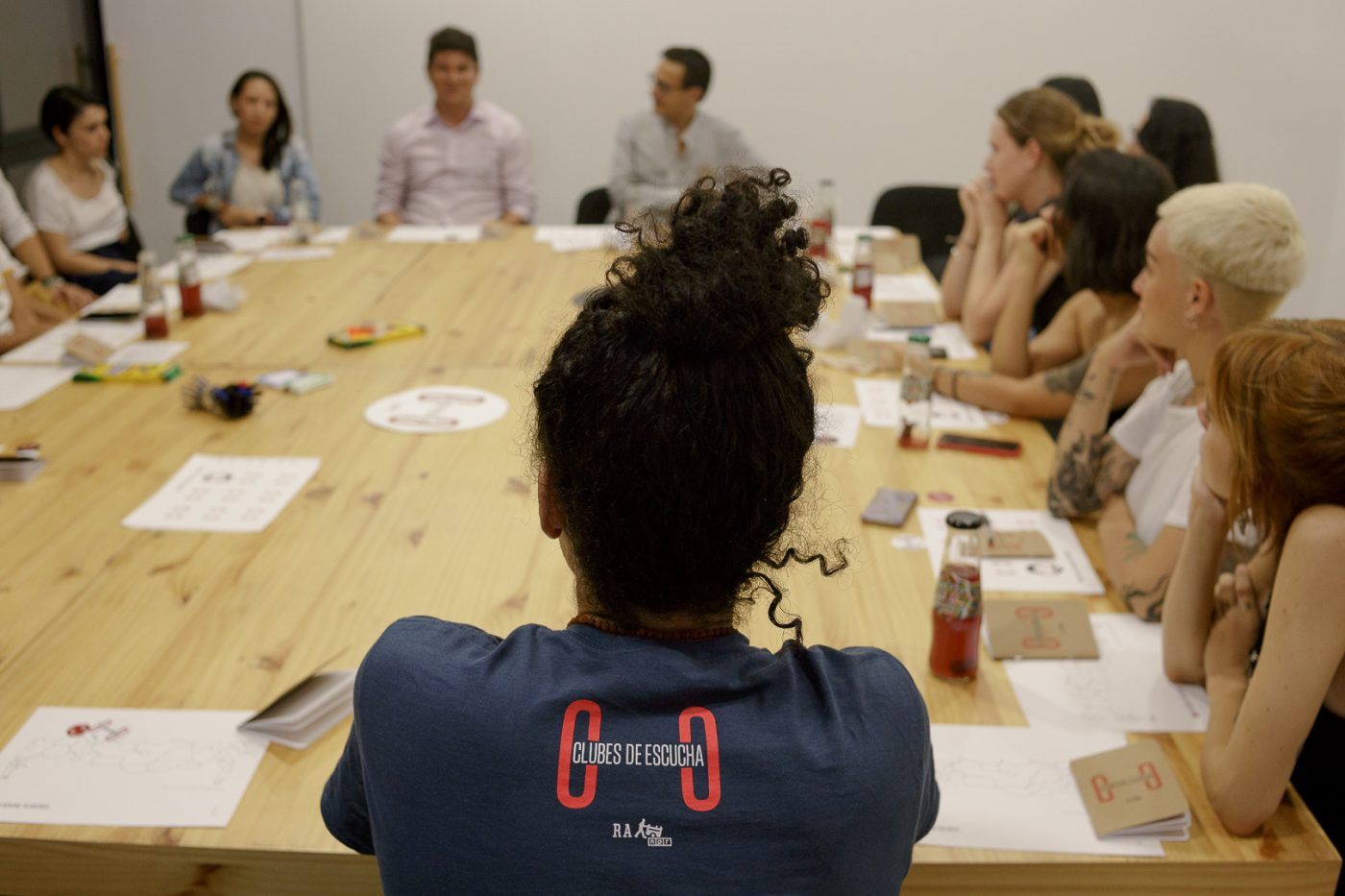The day that The New York Times ended its Spanish-language initiative to build subscribers among Latin American countries, Jorge Caraballo Cordovez posted in a 7,500-plus member Facebook group, mourning the loss of NYT en Español.
“It is a pity to lose projects with which we share the objective of exploring and connecting Latin America through rigorous journalism. The emptiness is going to be felt; we need more media covering our region, our conflicts, our identities,” he wrote, in Spanish. (Many “Nooooos” ensued.)
This was posted in Club de Podcast Radio Ambulante, a virtual group fostering many IRL connections for the audience of the narrative podcast chronicling Latin American life around the world. Caraballo is a growth editor there and one of the administrators of the group. The New York Times ended NYT en Español because it couldn’t figure out how to build an audience loyal enough to convert or otherwise monetize. Radio Ambulante, distributed by NPR and taking a different format and approach than NYT en Español, has built its own loyal following through listener clubs to connect around stories of the Latin American experience. And yes, the team just launched a membership component to see if folks can chip in financially, as well.
Listening clubs are like a book club — but for podcast episodes. (The New York Times profiled music-focused listening clubs in London three years ago; NPR has experimented with listening parties for its millennial vertical Generation Listen. And, of course, the social and communal experience of group listening has been part of terrestrial radio since the beginning.) “That [Facebook] group became big and we saw that there was a need to go back to the basics and say ‘we’re talking about the stories — you want to discuss them, this is something you care about, it’s touching you permanently. It’s not just journalism that is informative to you; it’s stories but it’s also creating the opportunity to connect with others,” Caraballo told me. They decided “let’s go back to the first place and do this but offline. We don’t want to have Facebook in between you and other listeners.”

Funded by the News Integrity Initiative, Caraballo and community and memberships coordinator Gaby Brenes started in November to build out the (tame) infrastructure for a remote network of people who want to gather, listen to Radio Ambulante’s work, and discuss it together. They didn’t necessarily need Amazon Web Services or a ton of marketing given their Facebook group’s already substantial size. All they needed, really, was some space and people who wanted to show up, but they gave them some supporting resources (and snacks!) as well.
From February to May, they had hosted 20 pilot club meetups and officially opened up the listening clubs in the summer. (Caraballo and Brenes put together a very helpful guide for anyone to put together a listening club, either a passionate Radio Ambulante listener or someone from another podcast it for themselves, as part of the NII grant.) About 15 to 20 people showed up per club to meet at 6:30 or 7:30 in the evening — the organizers prepare for them to not be on time, though. They’d spend two hours together — getting to know each other, listening to a 30 to 40 minute long episode, discussing the episode with Radio Ambulante-provided guidelines, and then taking a group picture to mark the occasion. And it’s working: In surveys taken at the end of the meet-ups, 91 percent of participants said they felt they are communicating with the club in more powerful and efficient ways than on social media and 84 percent said it’s a conversation that they could not have in other places. (Another fun fact: Nearly 70 percent of the clubs have been organized by women, Brenes said.)
The team’s remote work culture definitely came in handy for this, with its 21-person staff spread across eight cities in Latin America. “It was easier to have someone we trust host the clubs in different cities,” Brenes said, though post-pilot they’ve branched out to include avid listeners as hosts beyond those eight places. (She’s based in Costa Rica.) “We worked with them to find a space that would allow people to feel welcomed and included. We really wanted to privilege conversation and it wasn’t about the luxury of the event.”
The conversation included snacks, as mentioned, but also materials to occupy people instead of their phones during the episode listening. Brenes designed worksheets and illustrations to increase engagement with the content of the episode. The discussion guidelines for moderators were designed for engagement, too: a first set for icebreaking and setting the conversational mood, a second set for exploring specific themes and topics mentioned in the episode, and a third “boomerang” group: “With Radio Ambulante, our audience has the potential to be global,” Brenes said. “We wanted people to be able to connect and bring that situation back to their cities.”

In one club meeting that Caraballo hosted in Colombia, the podcast episode focused on Venezuelan migration to Colombia and Brazil. They began the discussion after listening, and then someone raised her hand and explained she was just like the people in the episode: “She said…‘What you’re describing in the episode is what I’ve lived and what my family has experienced,'” he said. “She started sharing her experience. That completely changes the mood, the direction of the conversation.”
In addition to bridging borders, the clubs help bridge the generational gap in podcast listeners: “Latin America has this super rich tradition of radio journalism. The [generational] gap of adopting podcasts is still there and it’s still large and evident,” Brenes said. So she brought her parents to a meeting to help them get a sense of podcasts beyond that app in your phone.
Now, the listening clubs are out there in the world, both out of the pilot and spanning the globe. Radio Ambulante’s ninth season launched September 10 and Brenes and Caraballo made a push to organize a few more groups. “We had more than 75 organizers sign up to host a club,” Brenes said, noting they now have branches in 19 countries including Uganda, Belarus, and Australia. “It’s fascinating to think they not only listen to the podcast but were able to find five to six more people to have a conversation about it.” But that scale has also been a challenge, trying to sort through requests in the group from people looking for more listeners in their area, Caraballo said.
“We feel very proud and inspired to see that journalism can trigger these conversations. This can happen around cultural products, like movie clubs and book clubs,” he said. “But using journalism to connect people offline and be able to have these meaningful interactions can work very well.”
This article was originally published by Nieman Lab. It was republished on IJNet with permission.

